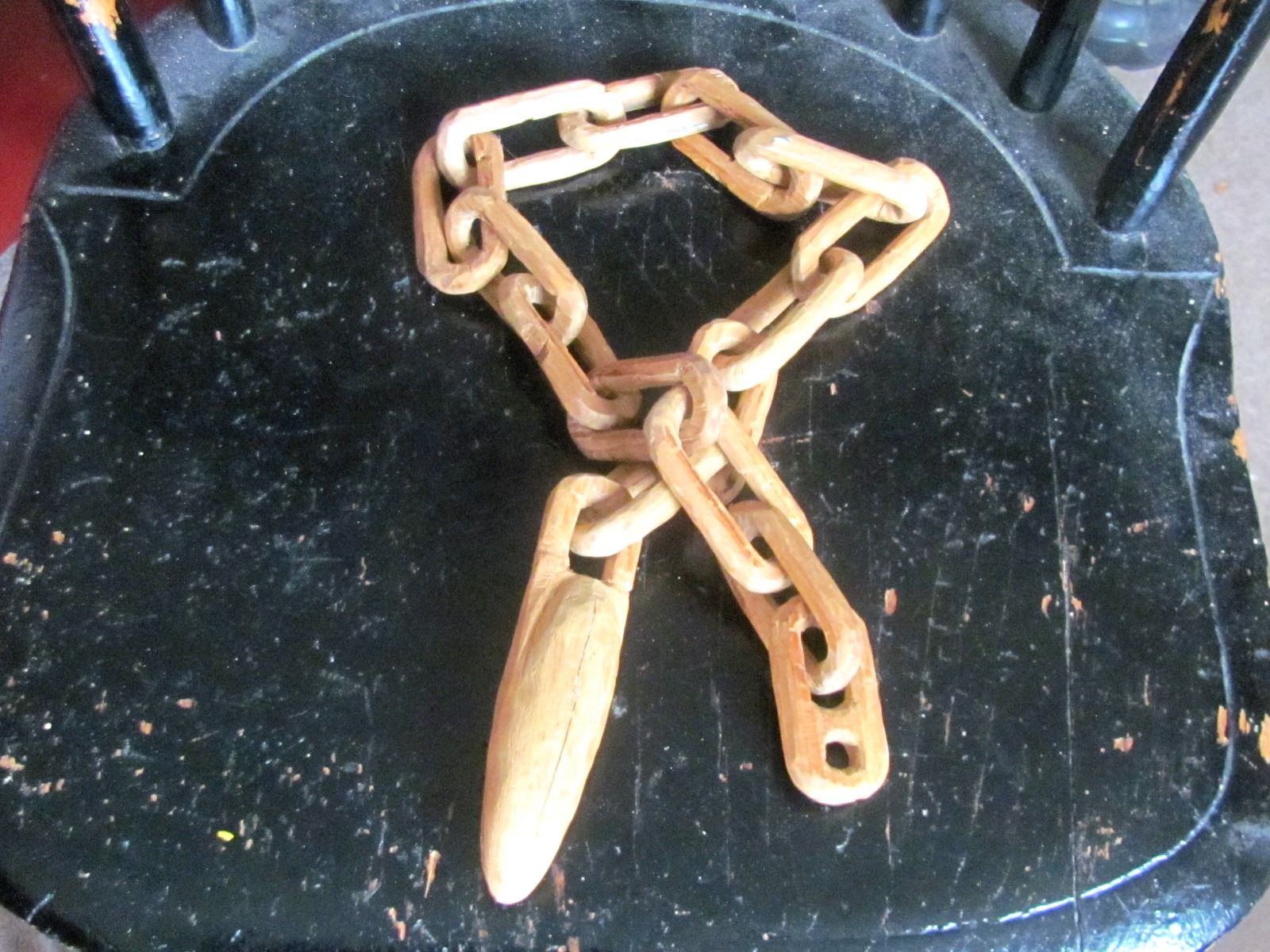Whalers
In the days of whaling, whalers spent weeks or months between whale kills. Some whalers took up scrimshawing to break the monotony. Some scrimshawed whales’ teeth. Depending on the skill of the whaler, these teeth can be works of art.
In the mid-1980s, fake scrims began to show up at auction. They were very good, sometimes with a colored American flag. A simple test can detect these fakes. Heat a needle and stick it in the tooth. If it’s a genuine tooth, the needle will not penetrate. But if plastic, as the fakes are, the hot needle will sink into the tooth.
Whalers made and scrimshawed oval ditty boxes. Ditty boxes were made of whale baleen. Other whalers made figural ivory jagging wheels, sailors’ valentines, or table-mounted ivory knitty-noddys.
In the country
Away from the sea, long hours of darkness were difficult. Not for those living in towns and villages, but those living and working in the woods.
In the 1970s I met several old men, some in their late 80s or early 90s, who had worked in logging camps in their prime. It was long hours and hard work, except for winters. In the winter, the sun comes up late and sets early. This limited the hours men could work. You can’t log by candlelight. There were more idle hours than working hours.
These loggers were deep in the woods, far from civilization, where they would remain until spring. All they saw, day after day, were other loggers, horses, and deep snow.
Loggers passed the time any way they could. Playing cards, harmonica, or guitar were common. Some loggers, like the whalers, needed to keep their hands busy.
Loggers created what we call “whimsies” in my trade. The photo with this article is an example of a logger’s whimsy.
How it was done

First, a section of white pine about 30 inches long was selected. “Selected” is the key word. To carve in this detail required a piece of pine with straight grain, no knots or twists. This piece of pine might have begun an inch and a half square.
With a couple very sharp knives, the logger went to work. You’ll notice each chain link is independent, as a real chain link is. The logger carved the first link. Then the piece of pine was turned 90 degrees to carve the second link, then turned another 90 degrees, and repeated many times.
With a small knife, he carefully carved between the first and second link to free it from the neighboring link. This took time, a good eye, and a steady hand. And, it was done by dim oil lamp.
Sometimes these whimsies have an interesting beginning or ending. You’ll notice this chain has an oval pendant type ending, looks something like a plum bob. One of the most interesting chains I remember had an unusual top.
That chain had a 2-inch tall rectangle at the top. The rectangle was carved into four columns, creating a cage. The material in the middle was removed, well, all but a section that was carved into a round ball, maybe ½ inch in diameter. This ball, like the chain links, was independent of the surrounding wood, and could freely move inside the cage.
Back in the 1980s, I bought from Jane Farrell in the Stone Village the best piece of logger’s art I have ever seen. Jane found it in Windsor. It was a standing tom turkey with his tail feathers spread like a fan. Carved of white pine, the workmanship was incredible.
Tom stood 2 feet tall, with each tail feather carefully split maybe 8 inches deep. The body, neck, and head were equally well carved. I sold it to Bill Orcutt. I wish I had it today.
When I handle these artifacts, I am reminded of the old loggers I knew over 50 years ago. I didn’t realize it at the time, but it was an honor to have known them.
Church supper
I went to Kendall church this Sunday. As I walked in, Lee was putting a skillet on the woodstove. When the skillet was hot enough, Lee added fresh, neatly sliced slices of venison liver. Adam had just got his deer. It was a great church supper.
This week’s old saying. “Idle hands are the devil’s workshop.”